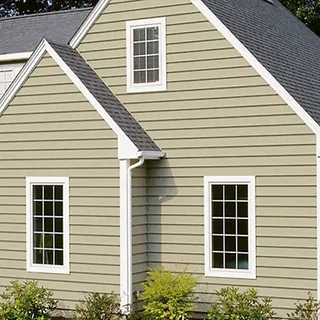Step-by-Step Vinyl Siding Installation Tips
If you’re looking to enhance your home’s exterior with a durable, low-maintenance material, Vinyl Siding Installation is a popular and practical choice. Known for its weather resistance, affordability, and modern appearance, vinyl siding has become a go-to solution for homeowners seeking long-term value with minimal upkeep.
Whether you’re a DIY enthusiast or planning to hire a professional crew, understanding the installation process will help you make informed decisions. In this guide, we’ll break down the steps involved in installing vinyl siding properly, ensuring it looks great and lasts for decades.
Why Local Conditions Matter
If you’re planning vinyl siding installation in Brunswick, OH, it’s important to account for the area’s seasonal temperature swings. Vinyl can expand in summer heat and contract in winter cold, so proper spacing and nailing techniques are essential to prevent warping or buckling over time.
Homeowners in Brunswick, OH also benefit from vinyl’s resistance to moisture and pests—two common regional concerns. Installing siding that stands up to Ohio’s varied climate will save time and repair costs down the road.
Preparing for a Successful Installation
Before starting, it’s essential to assess your current exterior and gather the right tools and materials. Proper preparation lays the foundation for a smooth, long-lasting install.
Here’s what you need to do first:
- Inspect the walls: Check for water damage, rot, or mold and repair any structural issues.
- Install a weather-resistant barrier: House wrap or felt paper adds an extra layer of protection.
- Gather materials: Vinyl panels, starter strips, J-channels, nails, utility trim, and soffit/fascia pieces.
- Choose the right day: Moderate weather is best. Vinyl expands and contracts, so avoid extremely hot or cold days.
Having a clean, solid surface and the proper base layer is key to keeping moisture out and your siding secure.
Step-by-Step Guide to Installing Vinyl Siding
1. Install the Starter Strip
The starter strip must be level and straight, as it will guide the alignment of all your panels. Secure it around the entire base of the structure.
2. Add Corner Posts and J-Channels
Corner posts frame the edges of your walls, and J-channels are used around windows and doors to lock in siding panels.
3. Begin Laying the Panels
Start at the bottom and work your way up. Each vinyl panel interlocks with the one below it. Allow for slight movement due to expansion by not nailing too tightly.
4. Trim and Fit Panels
Use a circular saw or utility knife to cut panels to fit around windows, doors, and rooflines. Always double-check measurements before cutting.
5. Install Soffit and Fascia
These complete the look and protect the roof overhang. Install soffit panels into the J-channels, followed by fascia trim along the roofline.
6. Final Check and Cleanup
Once all siding is up, inspect for loose areas, gaps, or misaligned pieces. Remove debris and seal any necessary joints or edges.
DIY or Hire a Pro?
Vinyl siding is designed for easy installation, but it still requires precision. A mistake in alignment or securing panels too tightly can shorten the siding’s lifespan or cause it to buckle. If you’re unsure, hiring a professional can save time, prevent costly errors, and ensure the job meets industry standards.
One local provider trusted for high-quality exterior work is Trade Medics, known for professional-grade siding installations and personalized service tailored to Ohio homeowners.
Final Thoughts
Installing vinyl siding is one of the best ways to boost curb appeal, improve insulation, and reduce exterior maintenance. When installed correctly, it offers years of reliable performance and visual appeal.
Whether you’re tackling the job yourself or bringing in experts, following proper techniques and accounting for local conditions—like those in Brunswick, OH—will ensure your project’s success. With smart planning and the right materials, vinyl siding can be one of the best investments you make for your home.
Frequently Asked Questions
1. How long does vinyl siding last?
Most vinyl siding lasts 20–40 years with proper installation and minimal maintenance.
2. Can I install vinyl siding over existing siding?
In some cases, yes—especially over wood. However, damaged or uneven surfaces should be removed or repaired first.
3. Does vinyl siding fade over time?
Modern vinyl siding is UV-resistant and holds color much longer than earlier versions.
4. Is vinyl siding waterproof?
Vinyl is water-resistant, but it’s not completely waterproof. Proper house wrap and flashing are essential for moisture control.
5. Do I need a permit for siding installation in Brunswick, OH?
Most local municipalities require a permit for exterior remodeling. Check with your local building department before starting.

